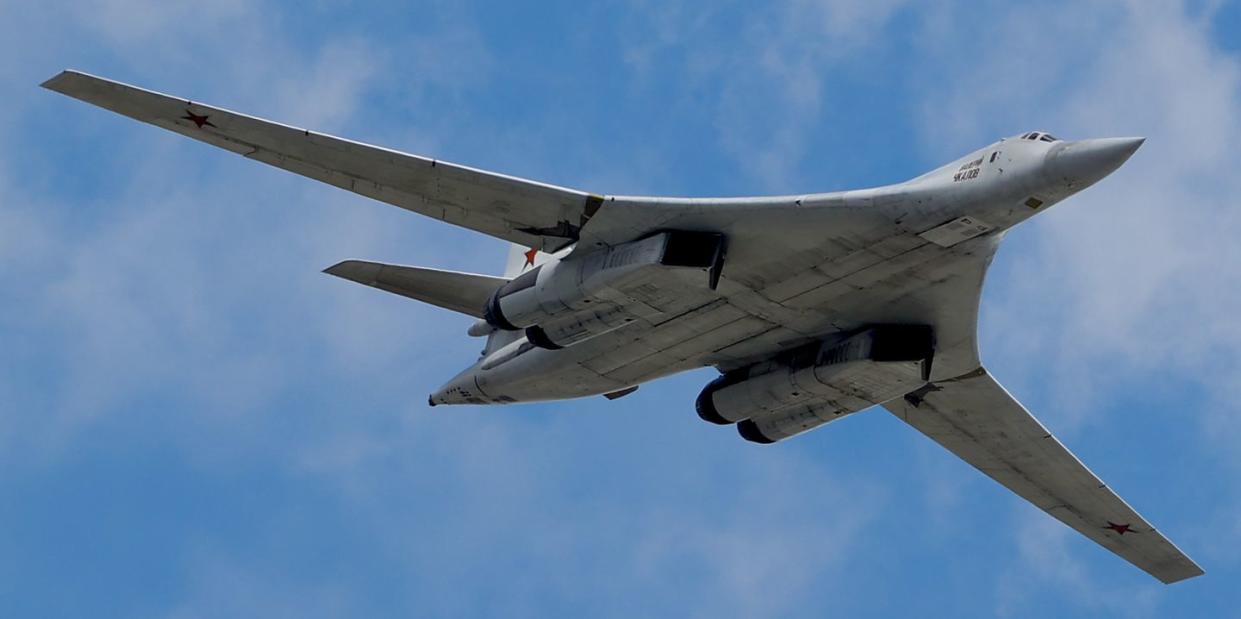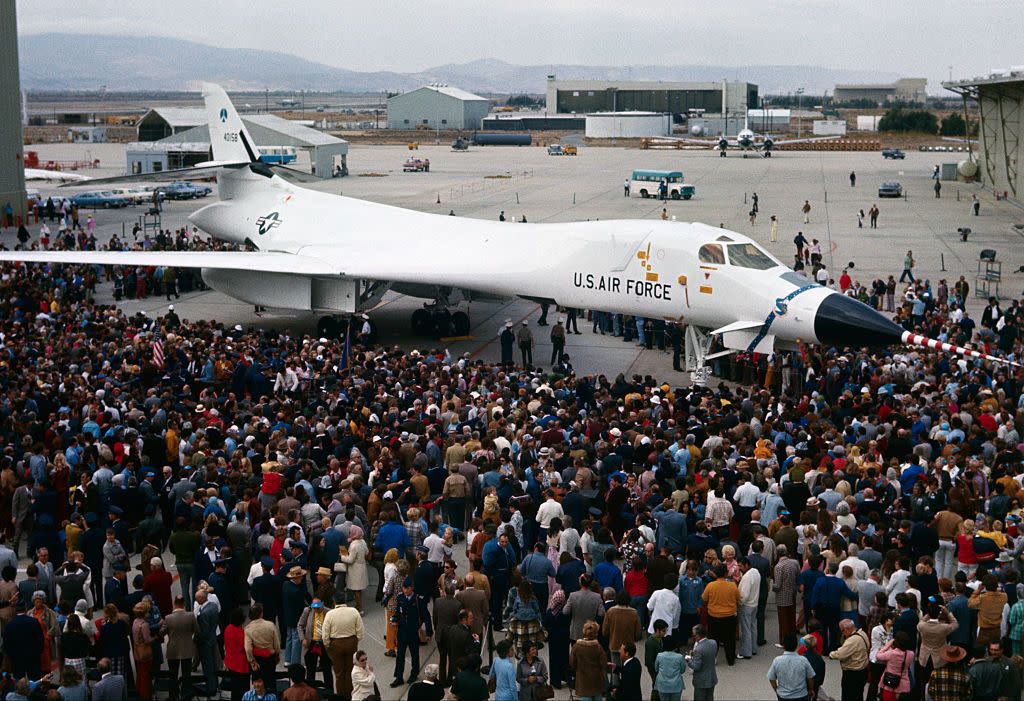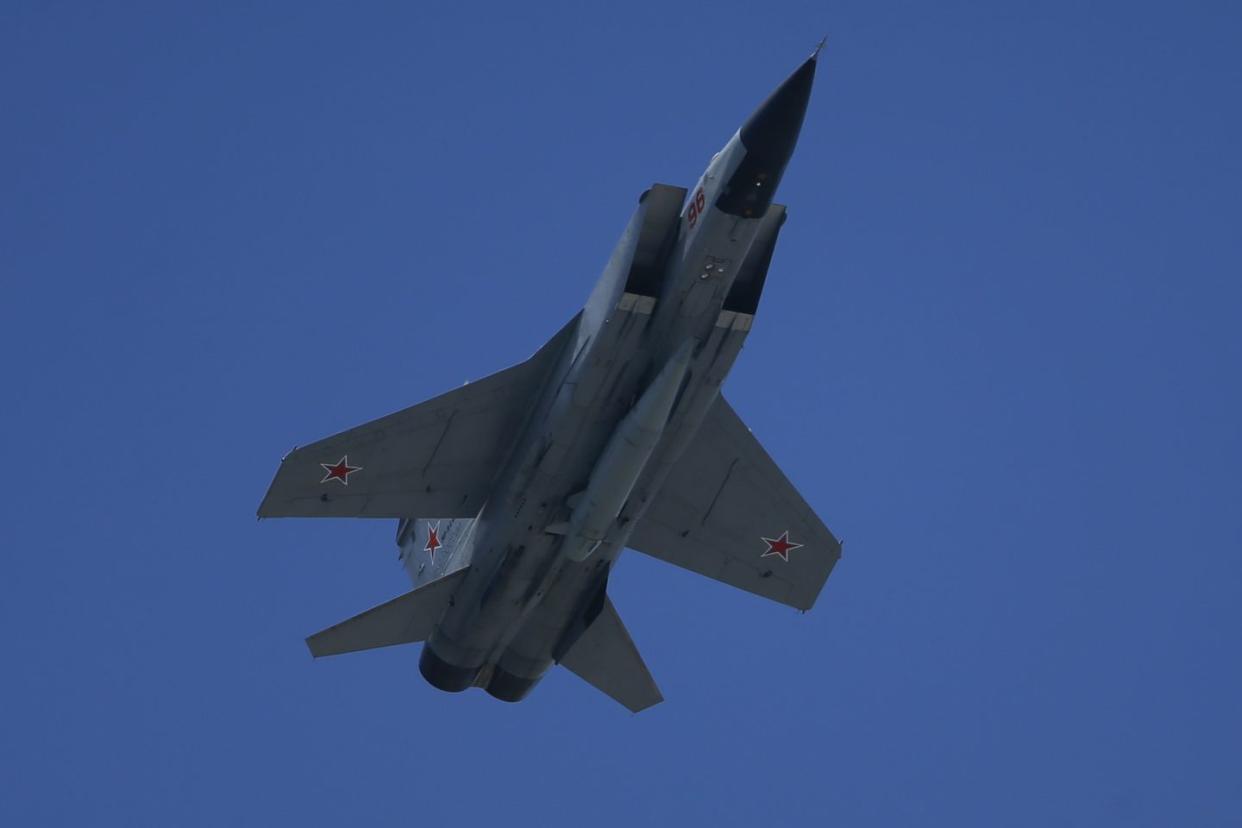A Russian Engineer Is Set to Spill Secrets to the U.S. About the 'White Swan' Bomber

A man claiming to be a former employee of the famous Tupolev aircraft company is seeking asylum in the U.S.
The man claims he used to work on the Tu-160 strategic bomber.
The Tu-160 is Russia’s most advanced bomber, designed to launch nuclear-tipped cruise missiles at the U.S.
The new Cold War between the United States and Russia has apparently played out in an unlikely place: the U.S.-Mexico border. A man claiming to be a former employee of a major Russian defense contractor showed up at the border, offering Russia’s military secrets in return for political asylum. The man claims to have worked on the Tu-160 bomber, Russia’s dual-capable, semi-stealthy, cruise missile flinging bomber.
The man, according to Yahoo! News, drove up to the border with his family—in an armored SUV—asking for political asylum. The man identified himself as a former civil engineer who worked at the Kazan Aviation Plant. The man claimed to have worked on an “attack jet,” but was worried that his past support for Russian political dissident Alexei Navalny would get him in trouble.
The man reportedly told officials he worked at Tupolev from 2018 to 2021, and referred to the Tu-160 as the “White Swan,” a Russian nickname for the Tu-160, known to NATO by the code name “Blackjack” due to its white paint and graceful, swan-like appearance.

The Soviet Union’s Tupelov Design Bureau developed the Tu-160 in the late 1970s. The aircraft resembles the American B-1 bomber both in appearance and mission, with a sharp, pointed nose, a variable geometry wing that can swing forward or back, and an overall sleek appearance.
The “Blackjack” primarily serves as a cruise missile carrier. It can carry up to six Kh-55SM land attack cruise missiles, each with a 200-kiloton thermonuclear warhead, or the Kh-555, armed with a conventional high-explosive warhead. (The B-1 bomber is no longer a nuclear-capable aircraft.)
As a cruise missile carrier, the Tu-160 typically flies at Mach .77 and a maximum altitude of 39,000 feet. However, also like the B-1 bomber, it can penetrate enemy airspace at low altitudes, flying at 640 miles per hour with the help of a terrain avoidance system.
Here’s a video, courtesy of Russia’s Ministry of Defense, of a Tu-160 launching Kh-101 land attack cruise missiles against targets in Syria:
Russia’s economic troubles after the collapse of the Soviet Union, leading into the 2000s, meant that it relied on ex-Soviet military hardware to keep the Russian armed forces fully equipped. Russia’s bomber fleet was no exception: It flies a mixed fleet of 66 Tu-95 “Bear” bombers, 42 Tu-22M “Backfire” bombers, and 16 Tu-160s. The Tu-160s are based at Engels Air Base near Saratov, 300 miles south of Kazan.
All of the Tu-160s are at least 34 years old, and an upgrade program only began in 2014. Just a handful of bombers have been upgraded from Tu-160 to Tu-160M status, but eventually, the entire fleet of White Swans will get a new glass cockpit, new navigation systems, and new satellite communications equipment. At the same time, Russia is restarting Tu-160 production, aiming to produce between 40 and 50 new bombers. The new bombers will reportedly receive new engines.
If the unnamed engineer is who he says he is, he could be very useful to U.S. intelligence. The Tu-160 is part of Russia’s nuclear triad that includes bombers, missile submarines, and land-based missiles. In the event of war, Tu-160s would fly over the Arctic Circle, their weapons bays filled with nuclear-tipped cruise missiles, and launch against targets in the U.S. and Canada. The new-build Tu-160s are supposed to fly for 40 years, so the more U.S. intelligence knows about them, the better.

According to the report, officials are particularly interested in whether or not the upgraded Blackjack bombers are being modified to carry hypersonic weapons. This is likely the Kh-47M2 (“Kinzhal”, or “Dagger”), a land-based, short-range ballistic missile modified to be carried by aircraft.
Kinzhal has a range of 1,200 miles, about the range of the Kh-55SM nuclear-tipped cruise missiles. The Kh-55SM, however, flies at about 500 mph, while Kinzhal’s top speed is about 7,672 mph (Mach 10). Fired at maximum range, a Kh-55SM would reach its target in about 2 hours and 20 minutes, Kinzhal in about 12 minutes. The introduction of hypersonics would immensely complicate NORAD’s efforts to destroy a Tu-160 bomber’s missiles once launched.
The unnamed Russian seeking asylum is what is called in intelligence circles a “walk-in”: someone who literally approaches U.S. officials, instead of being secretly recruited, and offers information, often for a price. If this individual is who he says he is, his information is a lot more useful than it was a year ago. As relations between the U.S. and Russia turn frosty over the war in Ukraine and Russia threatens to use nuclear weapons, Moscow’s nuclear secrets are more valuable than they’ve been in decades.
You Might Also Like
